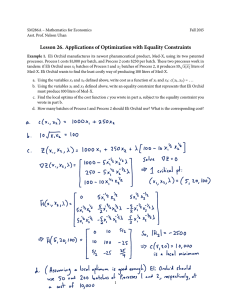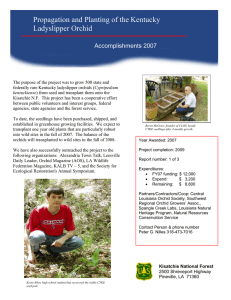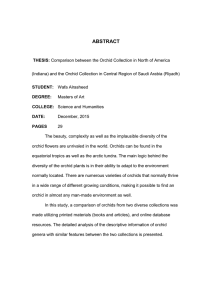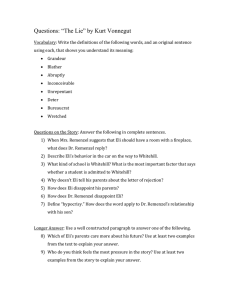Lesson 26. Applications of Optimization with Equality Constraints
advertisement
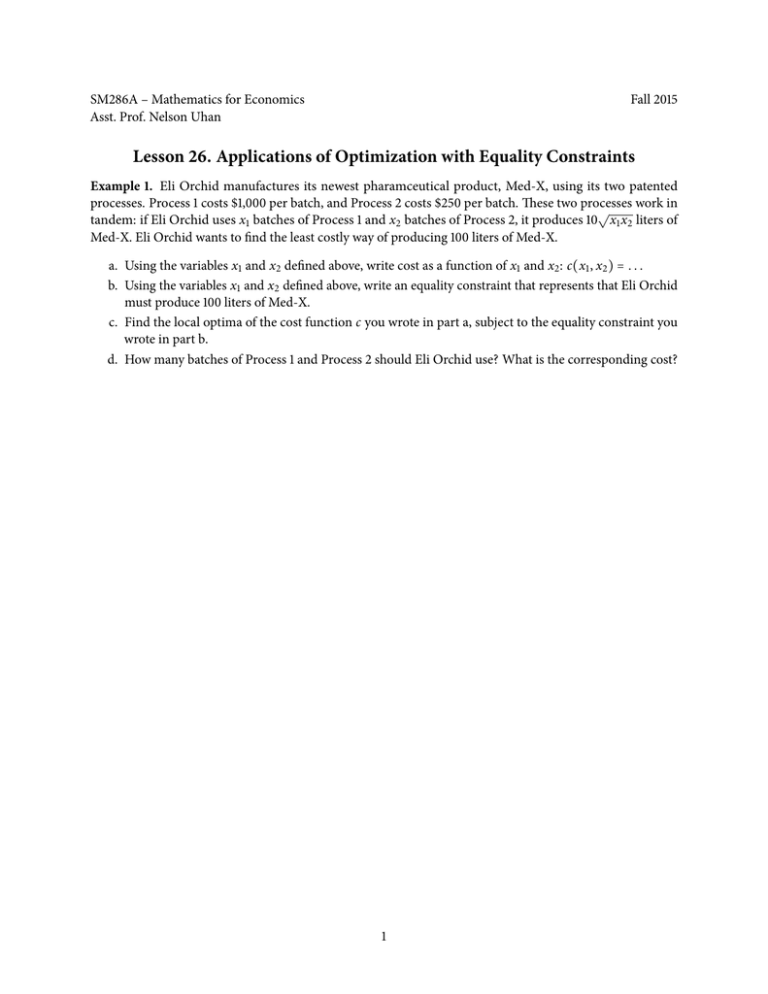
SM286A – Mathematics for Economics Asst. Prof. Nelson Uhan Fall 2015 Lesson 26. Applications of Optimization with Equality Constraints Example 1. Eli Orchid manufactures its newest pharamceutical product, Med-X, using its two patented processes. Process 1 costs $1,000 per batch, and Process 2 costs $250 per batch. These two processes work in √ tandem: if Eli Orchid uses x1 batches of Process 1 and x2 batches of Process 2, it produces 10 x1 x2 liters of Med-X. Eli Orchid wants to find the least costly way of producing 100 liters of Med-X. a. Using the variables x1 and x2 defined above, write cost as a function of x1 and x2 : c(x1 , x2 ) = . . . b. Using the variables x1 and x2 defined above, write an equality constraint that represents that Eli Orchid must produce 100 liters of Med-X. c. Find the local optima of the cost function c you wrote in part a, subject to the equality constraint you wrote in part b. d. How many batches of Process 1 and Process 2 should Eli Orchid use? What is the corresponding cost? 1 Example 2. Suppose that you are interested in dividing your savings between three mutual funds with expected returns of 10%, 10% and 15%, respectively. You want to minimize risk while achieving an expected return of 12%. To measure risk, use the variance of the return on investment: when a fraction x of your savings is invested in Fund 1, y in Fund 2, and z in Fund 3, the variance of the return has been calculated to be v(x, y, z) = 400x 2 + 800y2 + 200x y + 1600z 2 + 400yz a. Consider the equality constraints below. Why do these constraints make sense for this problem? 1.10x + 1.10y + 1.15z = 1.12 x+y+z =1 b. Find the local optima of the variance v, subject to the equality constraints given in part a. c. How much should you invest in the three mutual funds? 2 (1) (2)
